Strangulation furrow represents a mark on the skin of the neck of a deceased. It occurs due to the pressure of the material on the cover and underlying tissues. Signs of strangulation furrow observed in people who have committed suicide, or who have been subjected to violent acts leading to suffocation. 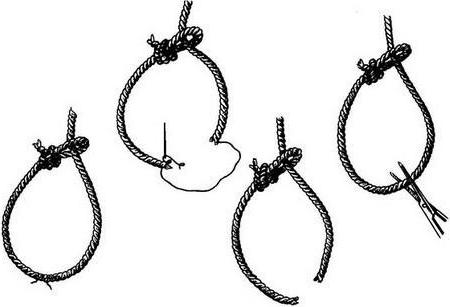
General information
Strangulation furrow when removing the loop It is formed due to rapid compaction and drying of damaged skin areas. The severity of the trace will depend on the material that exerted pressure on the cover, as well as the degree of irritation of the epidermis. So, with a stiff loop, the furrow is always deep, with a semi-rigid, it is more penetrating than soft. And the latter gives a furrow with fuzzy borders. Often, it does not differ from a typical skin color.
Description
It includes:
- Indication of localization (part of the neck).
- The structure (double, single, etc.).
- The presence of a trace from the relief of the material.
- Closed / open.
- Direction.
- Depth.
- Width.
- Description of the bottom and edges.
- Density.
- The presence / absence of hemorrhages and other signs.

Specificity
Upon examination, determine the area in which is located strangulation furrow. When hanging this place can be in the upper, lower, middle part, lower / higher than the thyroid cartilage. Characterizing the direction, they establish how the track is located in separate parts of the neck - at different or at the same level. The description indicates the distance:
- To the right and left - from the mastoid processes of paired temporal bones.
- Behind - from the tuber on the back of the head.
- In front - from the edge of the thyroid cartilage.
Items
Their number depends on the number of revolutions of the material (loop). Between some elements, rollers are formed. They are the result of pinching of the skin between the revolutions of the material. The rollers can be wide and narrow depending on the distance between the turns of the rope. With their random arrangement, the elements are also chaotic. The rollers can be narrow, short, in the form of individual scallops. On examination, it is necessary to differentiate the triple, double, etc. grooves from several individual tracks that occurred under pressure with different material or one, but at different times. The latter, as a rule, are not connected with each other and often have a different direction. 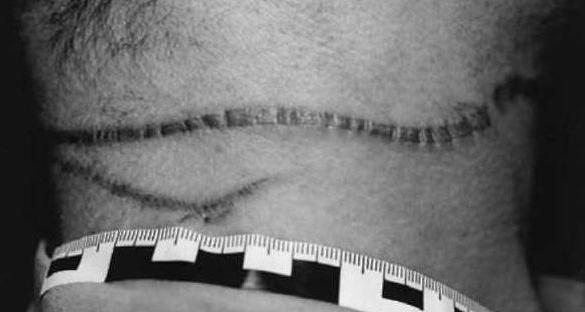
Width
It depends on the parameters of the material by which the pressure was applied. Strangulation furrow may have different widths in different places. This is due to the fact that the thickness of the material may differ due to bending, folding, etc. The width of the track is measured in several places. If a strangulation furrow uneven, measure the thickness of each individual element, the gaps between them in different areas. The total track width from the outer edge of the upper element to the outer edge of the lower and also in several places is also determined.
Depth
It depends on the thickness of the material and the force of gravity acting on it. The narrower the loop, the deeper the furrow it leaves. Soft and wide materials (scarf, towel, etc.) form pale and wide traces. Gravity is also important. If the legs of the floor do not touch when hanging, it is higher, respectively, the furrow will be deeper. In a semi-sitting position, even narrow material can leave a shallow footprint. In some cases, soft and wide loops with little pressure may not form furrows at all. This happens, for example, if soft material is placed under them - a scarf, scarf, cotton wool. In various areas strangulation furrow has a different depth. Most of all, it is at the bottom.In this place, the maximum pressure of the neck falls on the loop. Depth decreases towards the location of the node. 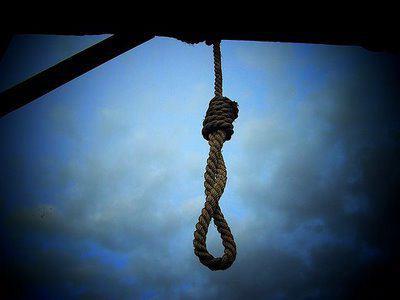
Additionally
The groove relief will depend on the material used to create the loop. The trace is its negative display. Furrow density may also vary. The more pronounced drying processes, especially when desquamating the skin, the higher it is.
Practical description
First of all, localization is indicated and a brief characteristic of the trace is given. The wording may be as follows: "On the neck, in the upper third, a single closed strangulation furrow, oblique from left to right, front to back. More pronounced along the front-left part of the neck surface." The following is a description of the progress of the trail: "The lower edge along the front surface of the neck is located in the area of the thyroid cartilage along the upper edge, 158 cm from the sole of the feet. The trail runs lower from:
- mandibular angles: right - by 1.5, left - by 2.5 cm;
- mastoid processes: right - by 1, left - by 2 cm.
At the back, the furrow branches converge at an acute angle in the area located 1 cm to the right and in the region of the external occiput. Width 2 cm, uniform, depth - 0.5 cm. Rollers are pronounced, lower beveled, upper undermined. The bottom is soft. ”Another example:“ Behind the branches are not traced (in this case, you can snap their ends). With conditional continuation, they converge at a point 1 cm to the right and in the region of the occipital protuberance at an acute angle. " 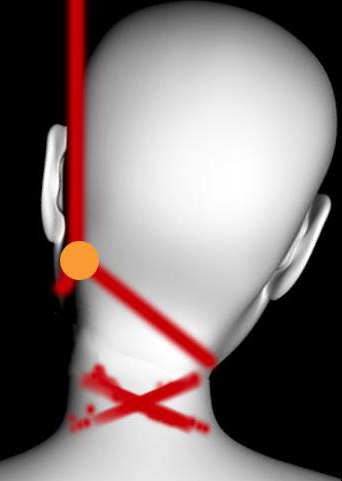
Types of strangulation furrow
There are two of them. The first is a closed furrow. It can be described as follows. On the cosh in the upper third there is a single oblique from the bottom up, front to back, a little furrow closed from right to left. The width along the front surface on the back line is 1.7 cm, on the left - 1.4. The bottom is smooth, of dense consistency, brownish-brown in color. The depth of the midline is 0.3, on the left is 0.1, on the right is 0.4 cm. In the course of the furrow, it is located 4 cm below the chin along the back line, on the left and right, respectively. Branches with an oblique direction go to the back of the neck. They turn pale and converge at an acute angle facing below the projection of the occiput 2 cm downward. 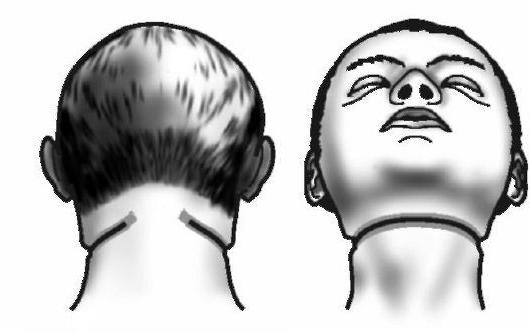 An open furrow can be described as follows. "In the upper third on the skin of the neck there is oblique from bottom to top, front to back and slightly from right to left, a single open sulcus. The width along the midline on the front surface is 0.5 cm, on the left - 0.6, on the right - 1 cm. The bottom is smooth, dense, dark Depth in the midline - 0.2 cm, in the back - 0.2 cm, on the right - 0.5 cm. In the course of the furrow, the upper edges are located 3 cm along the midline from the projection of the mandibular angle to the right, 4.5 cm from the chin, 5 cm to the right of the area of the mastoid process, 7 cm from the occipital protuberance on the back the left branch with a skew-up direction. It is interrupted on the left at the center of the lower jaw body. The right branch with a skew-up direction. There is a transition to the back of the neck. The branch is paler and breaks at a distance of 7 cm from the projection of the nape of the neck. Between the ends of the strangulation groove, the gap is 9 cm".
An open furrow can be described as follows. "In the upper third on the skin of the neck there is oblique from bottom to top, front to back and slightly from right to left, a single open sulcus. The width along the midline on the front surface is 0.5 cm, on the left - 0.6, on the right - 1 cm. The bottom is smooth, dense, dark Depth in the midline - 0.2 cm, in the back - 0.2 cm, on the right - 0.5 cm. In the course of the furrow, the upper edges are located 3 cm along the midline from the projection of the mandibular angle to the right, 4.5 cm from the chin, 5 cm to the right of the area of the mastoid process, 7 cm from the occipital protuberance on the back the left branch with a skew-up direction. It is interrupted on the left at the center of the lower jaw body. The right branch with a skew-up direction. There is a transition to the back of the neck. The branch is paler and breaks at a distance of 7 cm from the projection of the nape of the neck. Between the ends of the strangulation groove, the gap is 9 cm".